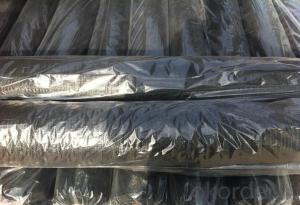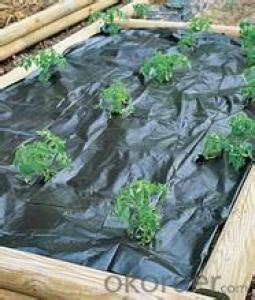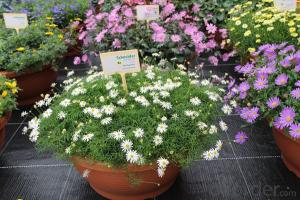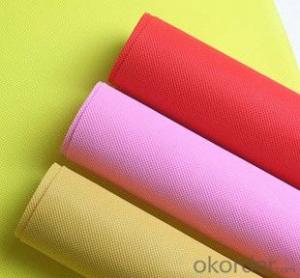Polyfelt Eco-Friendly PP Spunbonded Nonwoven Weed Mat Geotextile
- Loading Port:
- Qingdao
- Payment Terms:
- TT OR LC
- Min Order Qty:
- 500 m²
- Supply Capability:
- 500000 m²/month
OKorder Service Pledge
OKorder Financial Service
You Might Also Like
Product Description
The weed control mat is made of environmentally friendly raw materials, pp woven fabric. It used to prevent the growth of weed, without the use of potentially dangerous chemical sprays or labor intensive hoeing. Once installed, weed mat will continue providing protection for years without maintenance.
They are permeable fabrics, which allow air, water and nutrients to pass through, and designed to block out the sun to reduce photosynthesis and stop weed growth.
Specification
ROPERTY | ASTM TEST METHOD | Minimum Average | Minimum Average |
Mass per unit Area | ASTM D-5261 | 3.0 oz/yd2 | 100 g/m2 |
Grab Tensile | ASTM D-4632 | 145 lbs | 660 N |
Grab Elongation | ASTM D-4632 | 15% | 15% |
Trapezoid Tear | ASTM D-4533 | 55 lbs | 245 N |
Water Flow Rate | ASTM D-4491 | 5 gal/min/ft2 | 203 L/min/m2 |
UV Resistance | ASTM D-4355 | 70% @ 500 hrs | 70% @ 500 hrs |
ROLL DIMENSIONS | |||
Roll Width | 0.9m (3’) | 1.8m (6') | 2.7m (9') |
Roll Length | 91.4m (300’) | ||
Roll Weight | 8kgs (17lbs) | 16kgs (34lbs) | 24kgs (52bs) |
Features
1. Weed suppressant and drainage control landscaping fabric
2. Easy to use, Environmentally friendly
3. Allows water, air and nutrients through, suppressing weeds without the use of chemicals
4. Reduces the level of watering required due to the slower rate of water evaporation
Application
1. Excellent Weed Control
2. Moisture, fertilizers, air reach plants to allow for healthy soil
3. Good water and air permeability
4. Exceptional toughness and strength
5. Durable, tear-resistant; won't rot or mildew
6. Lightweight, easy to install, follows natural ground contours
7. Ideal for use in landscaped beds, under decks and walkways.






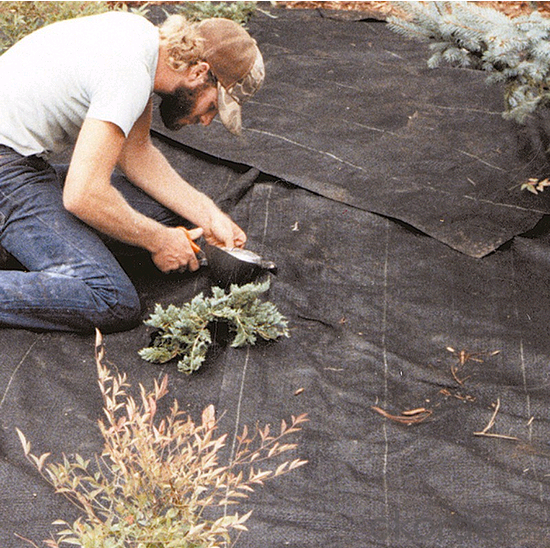

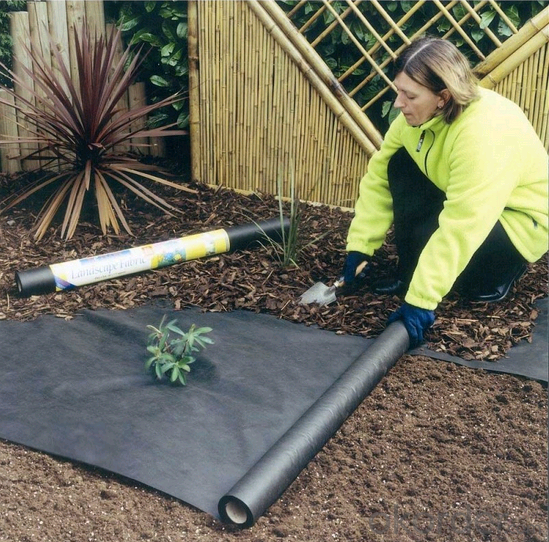
FAQ
1, Samples Policy
Samples are free, but the freight is on customers' charge
Samples will usually be sent out in one day.
2, Prices
As for the prices, we need you to provide us weight, color, width and usage so that
we can quote you best.
3, How to place an order?
Inquiry
Reply
Sample
Contract
Receiving deposit& production
Testing& Packing
Delivery
Receiving
- Q: How much is the price of anti-geotextile?
- In the actual engineering procurement, generally between the two geotextiles need about> 250px lap, so the procurement is usually based on the actual area plus 15% to 20% loss. Hongxiang new material Li Qian geotextile price is also required according to the specific needs of the project to specify the model, the specific offer.
- Q: Geotextile Model PP200-4-750 What does it mean?
- Is the geotextile 200g / ㎡? Geotextile is generally based on the weight per unit area to divide the specifications. Geotextile manufacturers Zhang Ming Chao for you to answer, I hope to help you.
- Q: Can geotextiles be used in geothermal energy projects?
- Yes, geotextiles can be used in geothermal energy projects. Geotextiles are often used as a separation and filtration layer in geothermal systems to prevent the mixing of different types of soils and to enhance drainage. They can also be employed as a reinforcement material to increase the stability of the ground during the installation of geothermal wells.
- Q: How are geotextiles affected by moisture content?
- Geotextiles can be affected by moisture content in several ways. When exposed to excessive moisture, geotextiles can lose their strength and integrity, leading to reduced performance and functionality. Excessive moisture can also cause geotextiles to become clogged or blocked, affecting their ability to drain water and maintain their permeability. Additionally, moisture content can impact the durability and lifespan of geotextiles, as it can contribute to the growth of microorganisms that can degrade the material. Therefore, it is crucial to consider moisture management when using geotextiles in various applications.
- Q: What is the effect of temperature on geotextile performance?
- The effect of temperature on geotextile performance can vary depending on the specific material and application. In general, higher temperatures can lead to increased softening and deformation of geotextiles, reducing their overall strength and stability. Extreme heat can also cause geotextiles to lose their mechanical properties and become more susceptible to degradation. On the other hand, lower temperatures may cause geotextiles to become stiff and less flexible, potentially affecting their ability to conform to the underlying soil or rock. It is important to consider the temperature range in which geotextiles will be exposed when selecting and designing their use to ensure optimal performance and longevity.
- Q: Are geotextiles suitable for use in geogrid reinforced slopes?
- Yes, geotextiles are suitable for use in geogrid reinforced slopes. Geotextiles are often used as a separation and filtration layer in geogrid reinforced slopes to prevent the mixing of soil layers and ensure proper drainage, stability, and reinforcement. They help in distributing loads and reducing soil erosion, making them a valuable component in geogrid reinforced slopes.
- Q: Geotextile price in the end is how much?
- Geotextile raw materials are also different prices, geotextile prices with the market changes, geotextile prices from one yuan to twenty yuan variable. After-sales service and thoughtful, customer satisfaction as the goal. Hongxiang geotechnical
- Q: How do geotextiles prevent soil contamination?
- Geotextiles prevent soil contamination by acting as a barrier between the soil and any potentially harmful substances. They are designed to allow water to pass through while filtering out pollutants, preventing them from entering and contaminating the soil. Additionally, geotextiles can also help to stabilize the soil and prevent erosion, reducing the risk of contamination from soil displacement.
- Q: What are the benefits of using geotextiles?
- Geotextiles offer several benefits, including erosion control, soil stabilization, and filtration. They prevent soil erosion by providing a protective barrier that helps retain soil particles and resist the impact of flowing water. Geotextiles also stabilize the soil by distributing loads and reducing settlement, which is especially beneficial in construction projects. Additionally, they act as filters, allowing water to pass through while preventing the migration of fine particles, improving drainage and preventing clogging. Overall, geotextiles provide cost-effective and environmentally-friendly solutions for various applications in civil engineering and construction.
- Q: How are geotextiles manufactured?
- Geotextiles are manufactured through a process called needle-punching, where synthetic fibers such as polyester or polypropylene are mechanically interlocked together using needles. This method creates a strong and durable fabric with various applications in civil engineering, landscaping, and erosion control.
Send your message to us
Polyfelt Eco-Friendly PP Spunbonded Nonwoven Weed Mat Geotextile
- Loading Port:
- Qingdao
- Payment Terms:
- TT OR LC
- Min Order Qty:
- 500 m²
- Supply Capability:
- 500000 m²/month
OKorder Service Pledge
OKorder Financial Service
Similar products
Hot products
Hot Searches
Related keywords


